Cheetah Photos and Facts for International Cheetah Day
By Laurandie du Preez
Today is a very important date in the cat calendar. With less than 7100 Cheetahs left in the wild, they are not only the fastest land animal, but also the most endangered big cat species.
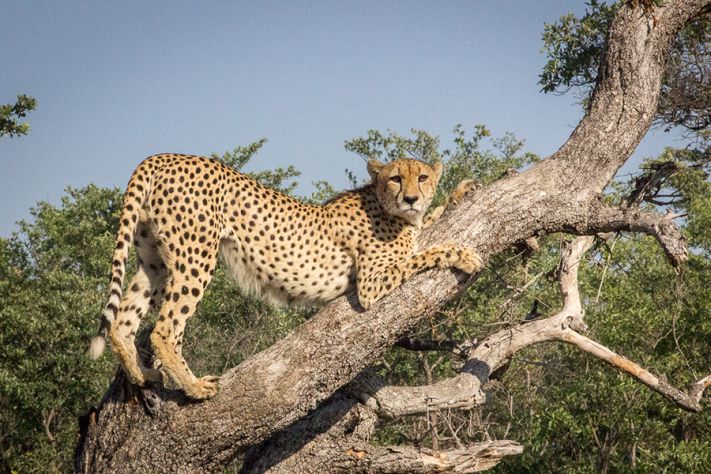
Since 2010, Dr. Laurie Marker, the founder of The Cheetah Conservation Fund (CCF), designated December 4th as International Cheetah Day, to not only educate people around the world on their importance to the eco-system but to also try and increase their numbers.
Growing up in South Africa, I was very fortunate to have often experienced the bush and wildlife! I love all animals, but prefer cats as they are extremely clever, graceful (usually) and majestic. Although one should not single out a specific cat species, I do have a special place in my heart for Cheetahs!
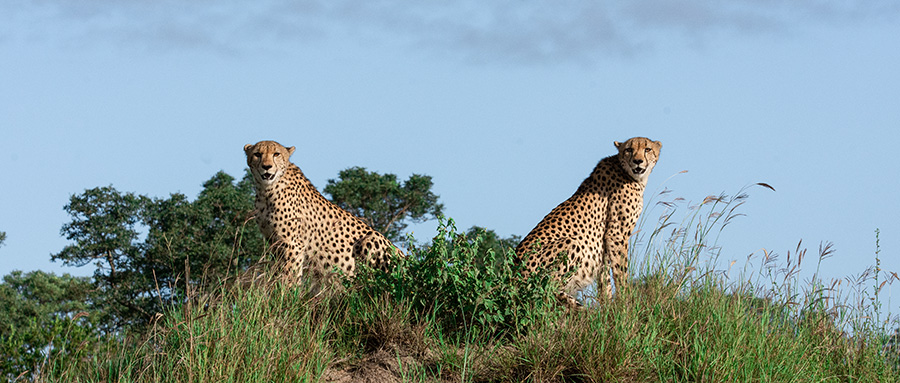
Cheetahs on the lookout
To spot (see what I did there) a Cheetah or a family of Cheetah, known as a coalition, is rare as they are quite shy. On a recent trip to South Africa, my family and I witnessed not one but two different coalition of Cheetah, while staying at Amakhosi Safari Lodge. Being able to view them and being so close to them, is a humbling experience!
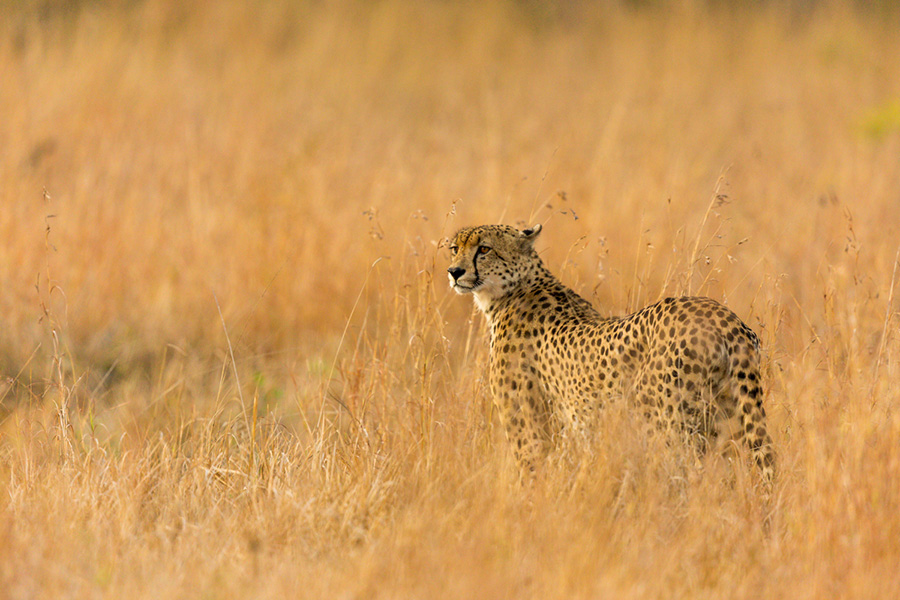
Cheetah in the grass
There are several subspecies of Cheetah in the world, however their habitat is generally in Southern and East Africa. Some of the best places to spot these beautiful animals will be in the Serengeti and Masai Mara due to the terrain! They prefer open bushveld and vast open grassland savannas, as they are well camouflaged, have lots of room to run and able to use their great eyesight. Look out for them on termite mounds which they use to get the optimal vantage point.
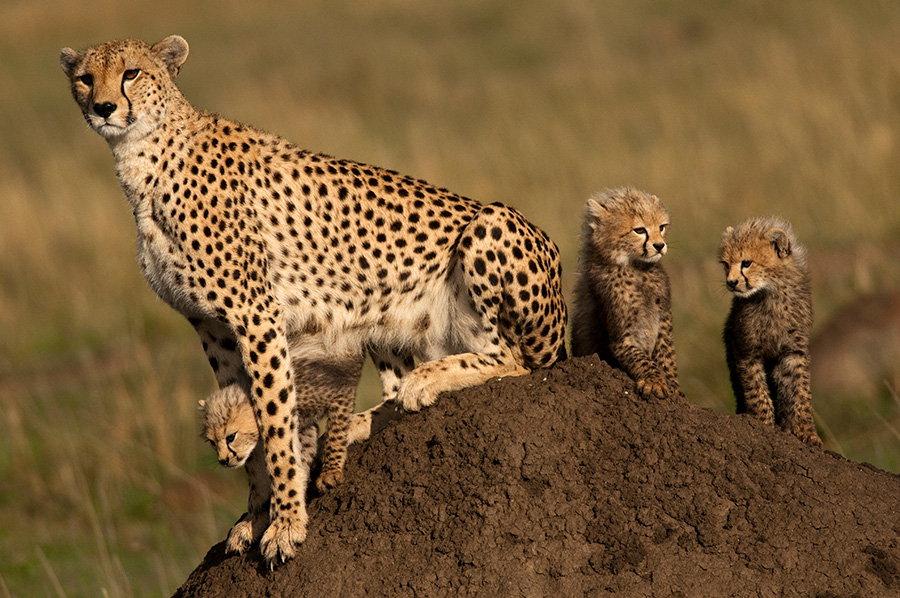
Cheetah Family on a termite mound
What makes these cats so amazing, you might ask… Cheetahs are the world’s fastest land mammal and can easily reach the speed of up to 70 miles (110km) per hour in just over 3 seconds and at their top speed, their stride is 21 feet (6 -7 meters). Their feet literally only touch the ground twice during each stride. Although they are considered as part of the Big Cat Family, their build is quite different from the rest. They have long, thin bodies with extremely powerful legs and a flexible spine, which does not only enable them to easily turn, but also do so while in midair, thanks to their long tail, which acts as a rudder. They have enlarged hearts, lungs and nostrils with extensive, air-filled sinuses which allows them to go from a normal rate of 60 breaths per minute to 150 breaths per minute. Their paws are also much narrower than other big cats and resembles the paws of dogs rather. They have semi-retractable claws (similar to football cleats), which offers them great traction during their sprints and sudden turns.
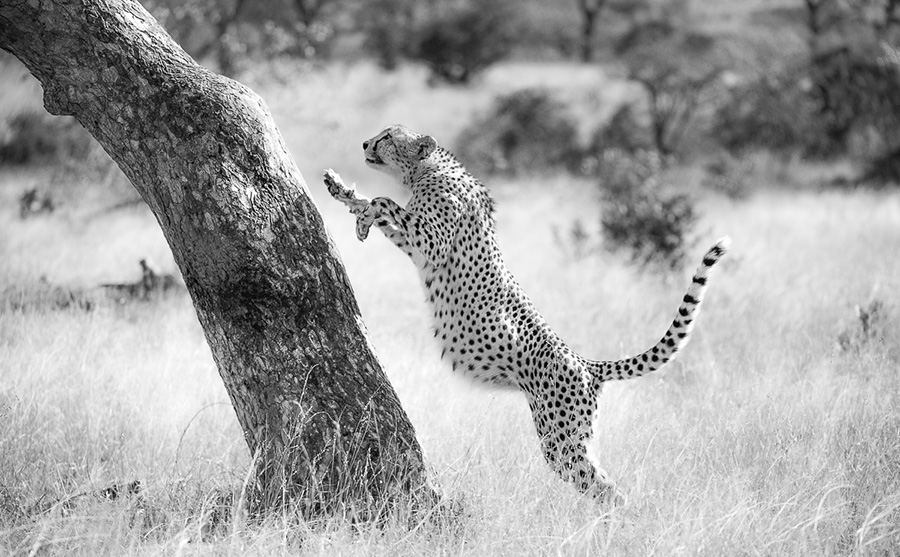
Cheetah jumping
Cheetahs have spots and like a human fingerprint, their spots and tail ring patterns are quite unique. Their spots grow from the black spots of their skin and with their tawny to golden brown fur and white belly, they easily blend into their surroundings, which makes it ideal for hunting. Cubs when born only weigh between 8.5 to 15 oz (150 - 400g) and have a thick silvery-grey mantle down their back. This helps to camouflage the cubs when mom goes out hunting by imitating the look of a honey badger to protect them from predators.
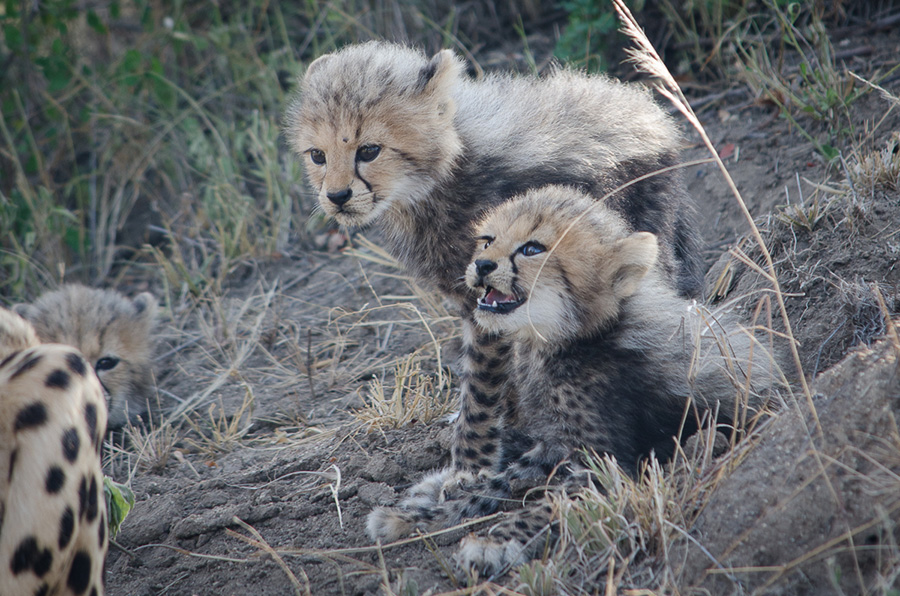
Cheetah Cubs
Cheetahs have tear marks on their face and African legend has it that these markings originated from a female cheetah who, when she found her cubs missing, cried for months on end until the marks where formed permanently and by the time she had new cubs, they were born with the same marks. These marks are extremely important to Cheetahs as they are daylight hunters, and this helps to reflect the glare of the sun while hunting and enabling them to focus on moving prey.
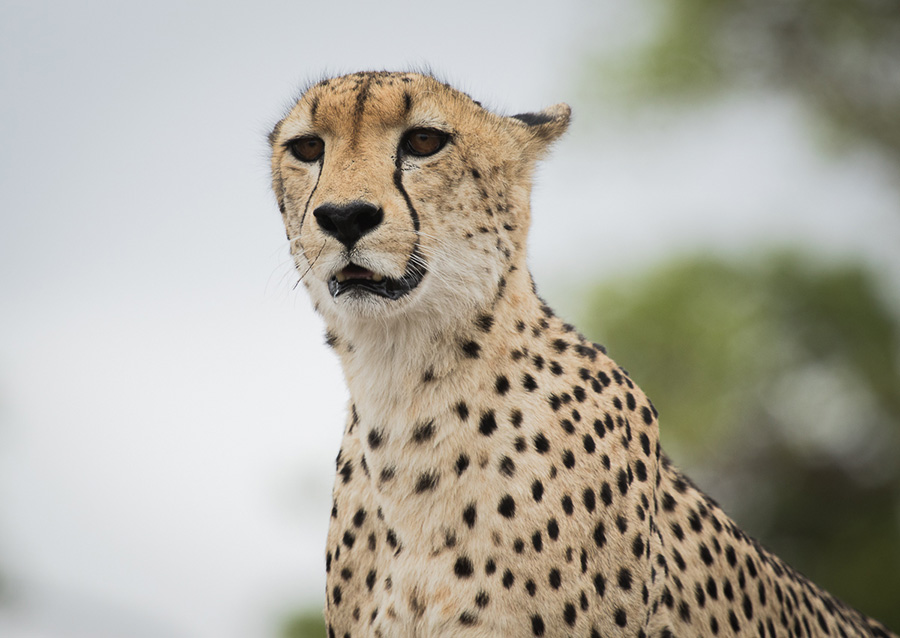
Cheetah - "Tear Marks"
Cheetahs also do not roar like the other big cats, they purr like domestic cats, especially when they are happy or content. They have a wide vocabulary and can produce a large range of vocal cues to communicate with each other, which includes chirping, stutter, hissing and they can even meeaow.
We have numerous safari ideas for you and your family that would afford the possibility of seeing these beautiful cats in their natural environment. As with all animals though, please remember that they are wild and move around freely and therefore we can never guarantee a sighting.

